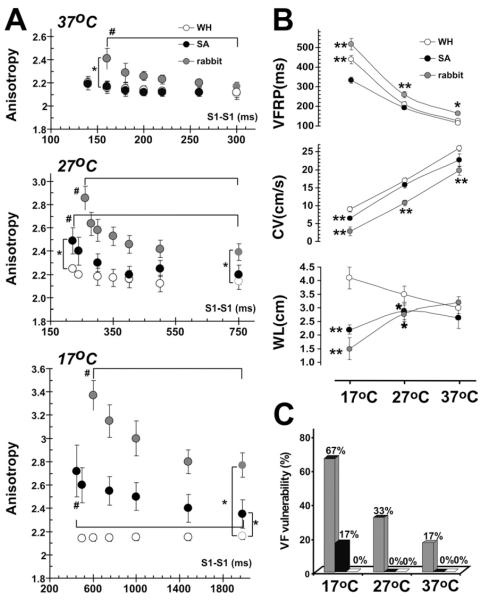Figure 2.
The influence of hypothermia on the main electrophysiological parameters and ventricular fibrillation (VF) vulnerability. A: Ventricular functional refractory period (VFRP), the minimal conduction velocity (CV) and the wavelength during maximum pacing rate (WL) in rabbit and ground squirrel hearts. Data summarizes summer-active (SA) and winter-hibernating (WH) ground squirrels (black and white circles) and rabbits (red circles). B: Conduction anisotropy versus pacing cycle length at different temperatures in rabbit and ground squirrel hearts. The anisotropy index was calculated as the ratio of longitudinal and transversal components of conduction velocity. *P < .05 versus WH ground squirrel. #P < .05 versus 37 °C. C: Effect of hypothermia on incidence of pacing-induced ventricular fibrillation (VF) in rabbit and ground squirrel hearts.

